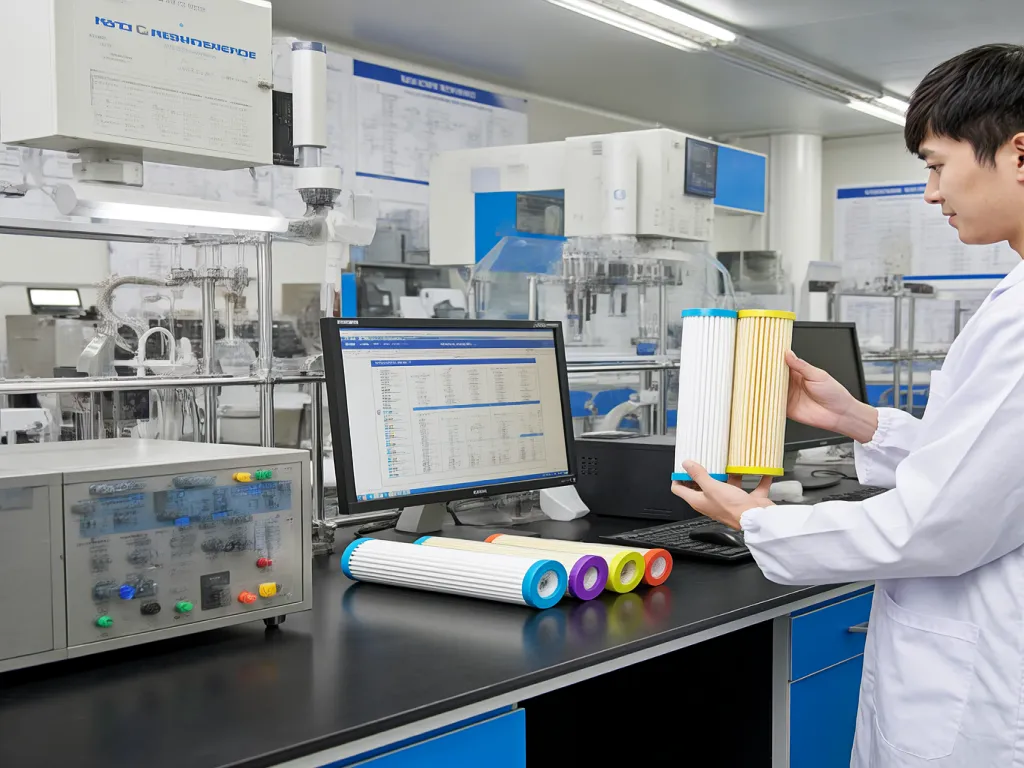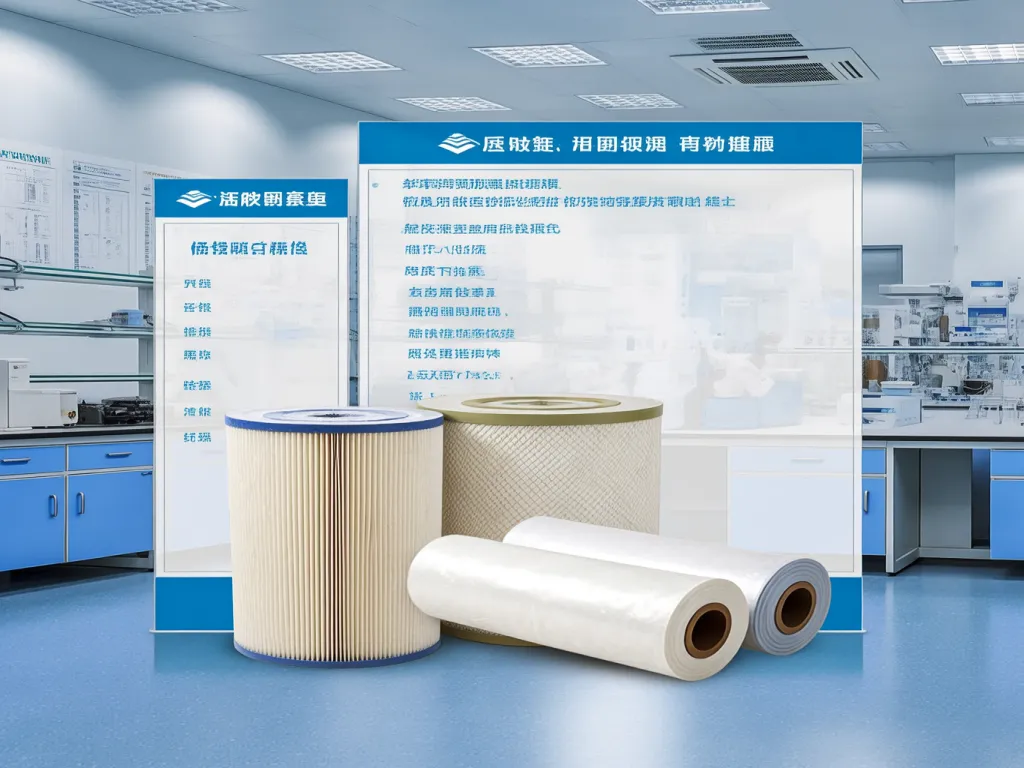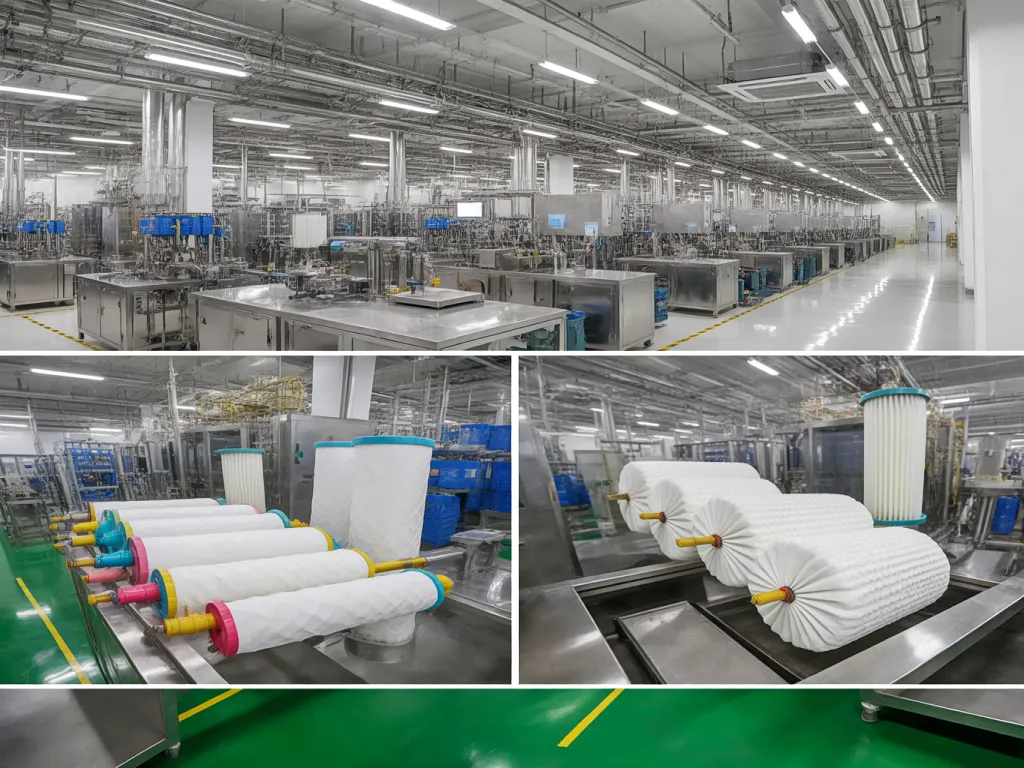Customizing Filterbags: Your Industrial Guide

Navigating the world of industrial filtration can be daunting, especially when it comes to selecting the perfect filterbags for your specific needs. Whether you’re battling with harsh chemicals, extreme temperatures, or demanding flow rates, the right filterbags can make all the difference. In this guide, we’ll dive deep into the art of choosing filterbags tailored to your industrial process, ensuring efficiency and cost-effectiveness. Ever wondered how a simple choice in material could revolutionize your filtration setup?

Material Comparison: Analyzing the Pros and Cons of Different Filter Bag Materials Like Polyester, Polypropylene, and Nylon
When it comes to industrial filtration, choosing the right filter bag material is crucial. The material you select can significantly impact your filtration system’s efficiency, longevity, and overall cost-effectiveness. So, how do you decide between polyester, polypropylene, nylon, and other options? Let’s dive into the pros and cons of each to help you make an informed decision based on your specific needs.
Polyester Filter Bags: The All-Rounder
Polyester filter bags are a popular choice in many industries due to their versatility. They offer excellent chemical resistance to most acids and alkalis, making them suitable for a wide range of applications. Polyester’s temperature tolerance ranges from 140°F to 300°F (60°C to 149°C), depending on the specific grade, which covers most moderate-temperature processes. One of the key advantages of polyester is its durability. It resists abrasion and wear, extending the lifespan of your filter bags. Additionally, polyester bags maintain their structural integrity well, even under pressure, ensuring consistent filtration performance. However, polyester isn’t without its limitations. While it handles many chemicals well, it’s not resistant to strong oxidizing agents like concentrated nitric acid. Also, in high-temperature applications exceeding its limit, polyester can degrade, compromising filtration efficiency.
Polypropylene Filter Bags: The Chemical Resistant Champion
If your process involves harsh chemicals, polypropylene filter bags might be your best bet. Polypropylene excels in chemical compatibility, resisting most acids, alkalis, and solvents. Its temperature range is slightly narrower than polyester’s, typically up to 200°F (93°C), but within that range, it performs exceptionally well. Polypropylene bags are also lightweight and have good moisture resistance, preventing them from absorbing liquids and swelling. This property is particularly beneficial in applications where the filter bag might come into contact with water or other liquids. On the downside, polypropylene is more prone to UV degradation than polyester, limiting its outdoor use. It’s also less resistant to high temperatures and can melt or deform if exposed to heat beyond its tolerance.
Nylon Filter Bags: The High-Strength Option
Nylon filter bags are known for their exceptional strength and abrasion resistance. If your process involves heavy particles or high-velocity flows, nylon can withstand the wear and tear better than many other materials. Nylon’s temperature range is comparable to polyester’s, making it suitable for a variety of moderate-temperature applications. Another advantage of nylon is its resistance to mildew and rot, which can be crucial in humid or damp environments. Nylon bags also maintain their shape well, ensuring consistent filtration over time. However, nylon’s chemical resistance is more limited than polyester or polypropylene. It’s not recommended for use with strong acids or bases, as these can degrade the material. Additionally, nylon tends to absorb moisture, which can affect its filtration properties if not properly managed.
Making the Right Choice
So, how do you decide which material is right for you? Start by considering your medium’s characteristics. What chemicals are present? What’s the temperature range? Are there any abrasive particles? Next, think about your operational requirements. Do you need a bag that can handle high pressures or velocities? Is cost a significant factor? Remember, there’s no one-size-fits-all solution. Each material has its strengths and weaknesses, and the best choice depends on your specific application. By carefully evaluating your needs and comparing the pros and cons of each material, you can select a filter bag that optimizes your filtration system’s performance and longevity.

Performance Evaluation: Key Indicators of Filter Bags
When it comes to industrial filtration, the performance of filter bags is not just a matter of efficiency; it’s a critical factor that can make or break your entire process. Let’s dive deep into the key performance indicators—filtration efficiency, pressure drop, air permeability, and abrasion resistance—and understand how they influence your industrial workflow.
First up, filtration efficiency.
This is the bread and butter of any filter bag. It measures how effectively the bag can capture and retain particles of a specific size range. Imagine you’re dealing with fine dust in a cement plant. A filter bag with high filtration efficiency will trap more of these tiny particles, preventing them from escaping into the atmosphere and ensuring cleaner emissions. But here’s the catch: higher efficiency often comes at the cost of increased pressure drop. For those seeking specific types of filter bags optimized for high filtration efficiency, consider exploring our nonwoven needle felt filter bags, known for their exceptional particle retention capabilities.
Speaking of pressure drop,
this is the resistance the filter bag offers to the flow of air or gas. A low-pressure-drop filter bag means less energy is required to push the air through, translating to lower operational costs. However, if you opt for a bag with extremely high filtration efficiency, you might notice a spike in pressure drop. It’s a delicate balance, isn’t it? You need a filter bag that offers good filtration without choking your system.
Now, let’s talk about air permeability.
This is all about how easily air can pass through the filter bag. High air permeability means less resistance, which is great for maintaining a steady flow rate. But remember, high permeability doesn’t always mean high filtration efficiency. Sometimes, you need a bag that’s a bit more restrictive to catch those finer particles. So, how do you decide? Well, it depends on your specific application. If you’re filtering coarse particles, a bag with higher permeability might be just fine. But for finer particles, you might need to compromise a bit on permeability for better filtration. For applications requiring a balance between permeability and filtration, our 7-inch polyester filter socks offer an optimal solution.
Abrasion resistance is another crucial factor,
especially if you’re dealing with abrasive materials. Think about a sandblasting operation where the filter bag is constantly bombarded with sharp sand particles. A bag with poor abrasion resistance will wear out quickly, leading to frequent replacements and higher costs. On the other hand, a bag made from durable materials like polyester or aramid fibers can withstand the abuse, ensuring longer service life and reduced downtime.
So, how do these performance indicators affect your industrial process as a whole?
Well, imagine a scenario where you’re using a filter bag with low filtration efficiency. You might think you’re saving money upfront, but in the long run, the cost of cleaning up the escaped particles or dealing with regulatory fines can be astronomical. Similarly, a bag with high pressure drop can increase your energy bills significantly. And let’s not forget about the impact of poor air permeability on your process flow rate. It can slow down your entire operation, leading to reduced productivity. In essence, choosing the right filter bag is all about finding the sweet spot between these performance indicators. You need a bag that offers high filtration efficiency without causing excessive pressure drop, good air permeability for steady flow, and excellent abrasion resistance for durability. It’s a complex decision, but one that can have a profound impact on your industrial process’s efficiency and cost-effectiveness.

Case Study: Customizing Filter Bags for Cost-Effective Industrial Solutions
When it comes to industrial filtration, the ‘one-size-fits-all’ approach simply doesn’t work. Every process has unique demands—be it the nature of the contaminants, temperature fluctuations, or chemical interactions. That’s why customizing filter bags based on specific process requirements is not just a good practice; it’s a necessity for maximizing cost-efficiency. Let’s dive into real-world examples where tailored filter bag solutions made all the difference.
Key Takeaways
These cases illustrate a crucial lesson: the most cost-effective filter bag isn’t necessarily the cheapest one upfront. It’s the one that best aligns with your process’s unique demands, whether that’s purity, temperature resistance, chemical compatibility, or durability. By investing in customization, you’re not just buying a product; you’re investing in a solution that optimizes your entire filtration system, reduces waste, and enhances operational efficiency.
So, how do you start customizing your filter bags? Begin by conducting a thorough assessment of your process parameters—temperature ranges, chemical exposure, flow rates, and desired filtration efficiency. Then, consult with a reputable filter bag manufacturer who can guide you through material selection, design modifications, and performance testing. Remember, the goal is to find the sweet spot where cost, performance, and longevity intersect.
Are you ready to transform your industrial filtration process? Let’s embark on this journey of customization together, ensuring your operations run smoother, cleaner, and more cost-effectively than ever before.
Case 1: Pharmaceutical Manufacturing – High-Purity Needs
Imagine a pharmaceutical company producing injectable medications. Here, the stakes are sky-high. Even the tiniest particle contamination can lead to product recalls, regulatory penalties, or worse—patient harm. Initially, this company used standard polyester filter bags, which, while cost-effective for general applications, fell short in maintaining the required purity levels.
The breakthrough came when they switched to PTFE (Polytetrafluoroethylene) coated filter bags. PTFE’s exceptional chemical resistance and low surface energy meant it could handle aggressive cleaning cycles without degrading, ensuring consistent filtration performance. Though initially more expensive, the reduction in product waste and downtime due to contamination issues translated into significant long-term savings. This case underscores the importance of prioritizing material compatibility and cleanability in high-stakes environments.
Case 2: Food Processing – Temperature and Moisture Resistance
In the food industry, especially in dairy processing, temperatures can soar, and moisture levels are consistently high. A dairy plant faced frequent filter bag failures due to condensation buildup and microbial growth, leading to operational inefficiencies and potential health risks.
The solution? Custom-designed filter bags made from a blend of polypropylene and antimicrobial fibers. Polypropylene’s inherent moisture resistance, combined with the antimicrobial properties, effectively prevented microbial colonization and condensation-related failures. Additionally, the bags were engineered with a higher temperature tolerance, ensuring they could withstand the plant’s steam sterilization processes. The result? A drastic reduction in replacement frequency and improved product safety, proving that sometimes, a little extra investment upfront can lead to substantial operational savings.
Case 3: Chemical Processing – Chemical Compatibility and Durability
A chemical manufacturing facility was grappling with filter bag degradation caused by exposure to harsh solvents. Standard nylon filter bags, though durable in many settings, were no match for the corrosive environment, leading to frequent replacements and increased costs.
The turning point was the adoption of Ryton (polyphenylene sulfide) filter bags. Ryton’s exceptional chemical resistance and thermal stability made it ideal for withstanding the plant’s solvent-laden atmosphere. Moreover, the bags were customized with reinforced seams to enhance durability under high-pressure conditions. The outcome? A significant decrease in maintenance costs and downtime, highlighting the value of selecting materials based on their specific chemical resistance profiles.
Selecting the ideal filterbags is more than just a purchase; it’s a strategic move towards enhancing your industrial process’s efficiency and reducing long-term costs. By understanding the nuances of materials like polyester, polypropylene, and nylon, along with key performance metrics, you’re now equipped to make informed decisions. Remember, the right filterbags can transform your filtration game. Ready to elevate your industrial filtration? Dive deeper into our resources or reach out for a customized consultation today!

